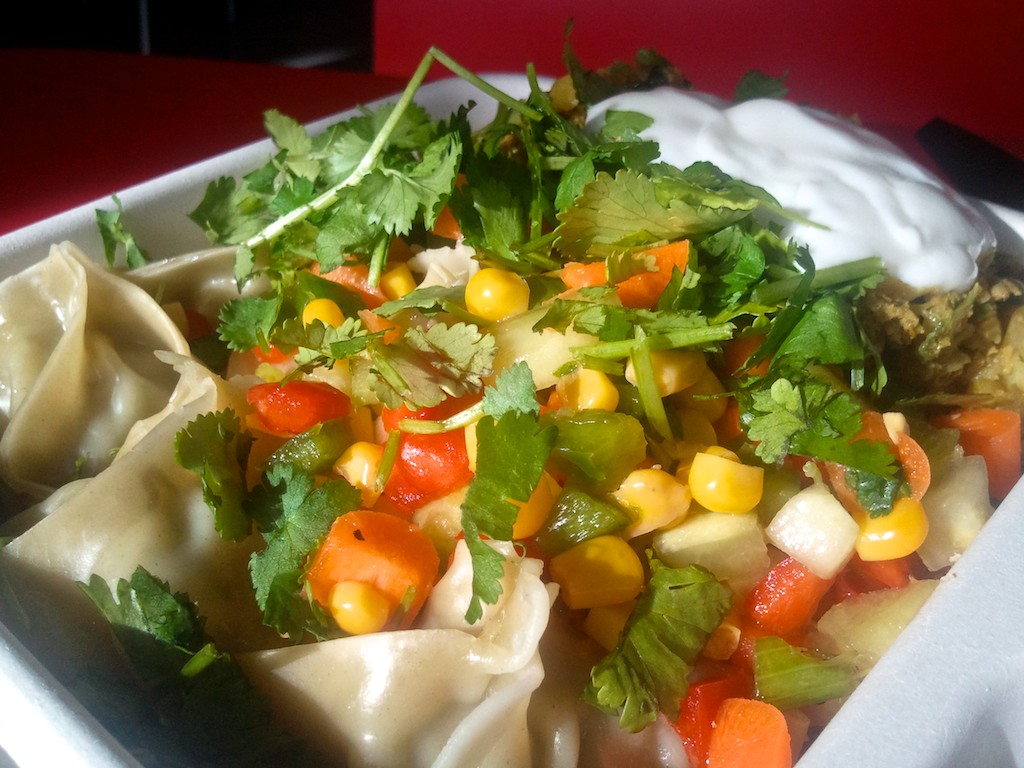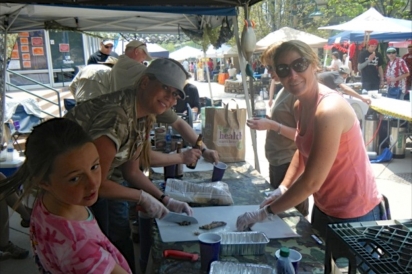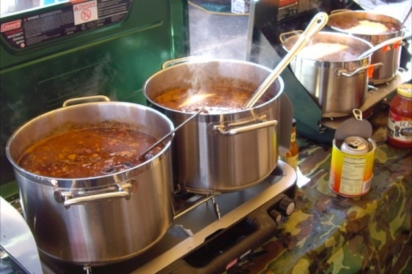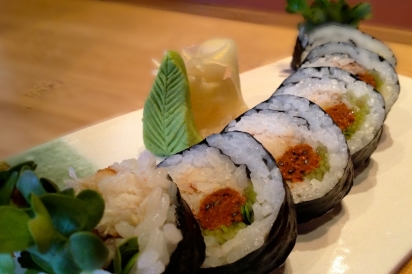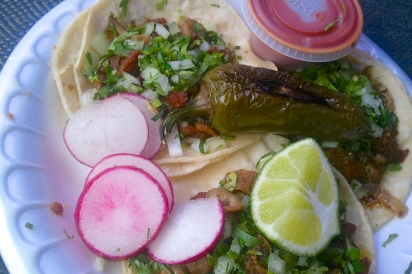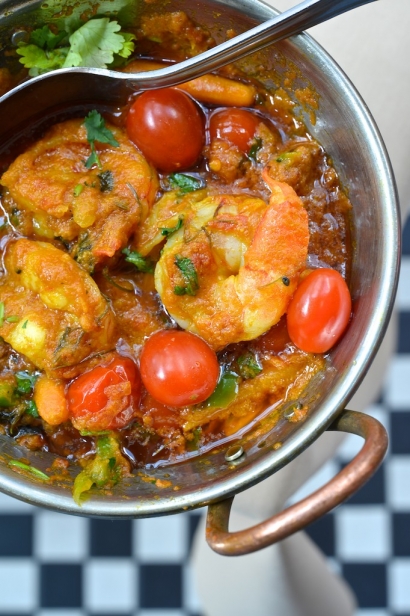The Hunt For Heat
It began in the late nineties. From out of nowhere, my desire to consume entire jars of jalapeños emerged, and hasn’t let up yet.
Many restaurateurs can’t believe anyone would really want such heat, but I really do. Unless I hiccup, it’s insufficient, but certain chefs, perhaps afraid of liability, won’t take it to the limit for me.
Science backs me up. The Times of India explains that pungent spices containing all of the caps (capsorubin diester, capsaicin, capsicidin and capsicosin) create burning feelings in the mouth and esophagus. When fumes enter lungs, the diaphragm’s usual rhythm is disrupted. Hiccups.
Fifteen years’ of tolerance building can make one overly confident. Such was the case at the Lions Club-sponsored State Chili Cook Off last summer at the Idaho Center in Nampa. The Duck Blind Chili team put their Ghost Chile Chili out. I’d done my research and wasn’t the least bit scared. They made me sign a waiver, which I glanced over dismissively, then ate the chili as friends and Chili Team observed.
A grave mistake. Immediately I started to hiccup, couldn’t see clearly, developed a massive headache and was incredibly afraid I was going to collapse on the sizzling July cement. I never, ever, ever want to try that chili again. In my interrupted-diaphragm-rhythm stupor, I gave the Duck Blind Team a glazed glare. They sat behind the booth, grinning.
“That’s hot,” I could only whisper. I felt betrayed; I’d thought those guys were friends. “Assault and battery” were not too far off, term-wise.
The chili is even hotter on the palate thirty minutes later, due to pepper oils spread around within the mouth. It’s on the lips, tongue, and works its way down your throat. When grinding the peppers, Duck Blind associates wear respiratory masks and gloves.
Gary Hunt of Duck Blind offered me some heat-repelling coping skills. Buttermilk beforehand to throat-coat. Afterward, sugar to quell the chemical reaction.
Even after a severe overdose, a true chile addict can attest that though they’ve been burned before, they’re constantly looking for their next fix.
With a little recovery time, a pint of buttermilk and some chocolate in my purse, I decided to binge again, beginning with the fabled Death Paste at Simple Sushi in Nampa.
Simple Sushi is Idaho’s first and only fully-sustainable sushi bar. Everything they do supports the economy around them. Fresh-caught fish, handmade porcelain dinnerware from Keren Brown Artworks and recycled and renewable surfaces make Simple Sushi deliciously different. Head Chef Paul Beverly’s artfully presented creations get the nod from the most selective of sushi fans. But I was there for the heat.
Simple Sushi’s deep and pungent Death Paste is a mixture that comes with their Death Roll.
“You can complicate your death,” owner Tracy Volpi explained, “We add habaneros and whatever is on hand, making it as hot as possible. Each night, a couple of people say, ‘make it hotter than the last person’, always one-upping.”
Why do we put spices with our fresh fish? Many feel it brings out the flavor, and that’s true, but the idea of adding a kick to foods that are oily or fatty might just be an inherent survival tactic. Penn State studies have shown that adding antioxidant spices can lower triglyceride levels in the blood stream. The spices, in short, cancel out a portion of the fatty effect.
Death paste is warm, deep, and piquant, a blend of wasabi, togarashi, and sriracha. The wasabi bite was thought to be the plant’s natural protection from insects and animals. Humans, though, are attracted instead. The short-lived snap enlivens our palates with its heat, complementing fish and other foods by working largely with the sinus cavity. Togarashi, Japanese for “chiles,” puts an exclamation point on food, with seven spices that elicit its essence. Sriracha, (pronounced SIR-rotch-ah) named for the city Si Racha in Central Thailand, is a combination of chile peppers, distilled vinegar, garlic, sugar and salt. It’s a well known and well used food amplifier among heat heads.
The trio made smoky, sultry music together and was agreeably warm.
The next day for lunch, I stopped at what I was certain was a winner. Last year, my son had a somewhat dramatic reaction to this taco truck’s food. Taking it all in stride, he was back for more within the week. I approached Aguililla Mexican Food’s high window with great expectations, feeling like a sneaky criminal. ‘Aguililla’ means ‘little eagle’ in Spanish, and my hopes were flying high. I asked if they had any super, super hot items. In other words, ‘gimme the goods.’ The kind looking man smiled benevolently down at me.
“No, meha,” he told me, “Nothing that hot.”
I stared up at him in disbelief. I knew he had the hot stuff, just as surely as he assumed I couldn’t take it. I could only talk him out of a grilled jalapeno, both of us the victims of food profiling.
Looking for something more potent, I tried MoMo in Meridian, the Capital City Public Market hit-turned-restaurant. Known for their popular and healthy dumpling-like ‘momos’ and zesty, colorful Himalayan cuisine, I asked co-owner Yogi if they could make a dipping sauce hot enough to make me cry. He said, “Maybe we can!” Their sauce gets its unique flavor from baked tomatoes, and its heat from ginger, garlic, green chilies, turmeric, coriander and cayenne pepper.
Co-owner Sunita and MoMo employee Mari presented me with a “pretty hot” dipping sauce. I gave both a nod for warmth, but no hiccups.
“Do you think this is hot?” I asked Mari, curious about how far off the normal mark I was. She nodded solemnly. I sampled, displaying no reaction as Sunita and Mari watched.
“Careful,” Mari warned, “It catches up with you.”
As they walked away to assist customers, I swallowed incorrectly. Eyes watered. I coughed. My nose began to run. MoMo had made me cry after all.
Knowing what Taj Mahal in Boise was capable of, it came last. Owner Sohail explained that when they opened, they decided not to compromise the flavor or style of the food. It would not get Americanized. Instead of blanding down the fare, they’d educate their customers.
“We mentally and physically prepare them to eat spicy food,” he emphasized, “Even at mild or extra mild, they will feel it. If we compromise, it’s not Indian food anymore.”
Conversion can take years. When a customer tried to get her daughter to sample the delicious Indian food, the girl said, “Over my dead body.” Seven years later, she’s eating food hotter than Sohail himself can eat.
Indian heat comes from the combination of spices and herbs. Cumin, white and black pepper, chile peppers, caraway seed, ginger, garlic, mint…there’s a big list. My curried shrimp was among the hottest dishes I’d had in months, and was happily satisfying, although there were no hiccups. Stopping at intervals to take pictures and converse with Sohail’s wife Farha saved me. Without the pauses, I would have experienced no small discomfort.
I guiltily pulled my pint of buttermilk out of hiding. Sohail and Farha both smiled.
“We use yoghurt with our food,” said Sohail.
Aha.
I’ll always be a fan of the hot and spicy. The health benefits abound, with peppers being a natural cure for depression. Sohail told me that in India, cures for ailments were found in the spice cupboard.
“Those that eat the balanced herbs and spices stay healthier. Their teeth, stomach…they live for a long, long time,” Sohail shared.
“That’s what I’m after!” I told him.
“Then you’ll have to eat every day at the Taj Mahal,” he answered cheerfully.
The hunt for heat is ongoing as I’m continuously drawn to items like the Idaho made jalapano jellies found at farmers markets, ominous-looking salsas, the whole spectrum of Thai food and the infamous Flying Pie Triple Habanero pizza.
But not just yet…I’m going to need a couple of weeks to recover.
As I woke up to heartburn for the first time ever at 11:30 p.m. that evening and 2:30 a.m. the following morning, Mari’s words echoed in my mind, “It catches up to you.”
Yes. Yes, it does.
But I kinda like it.


